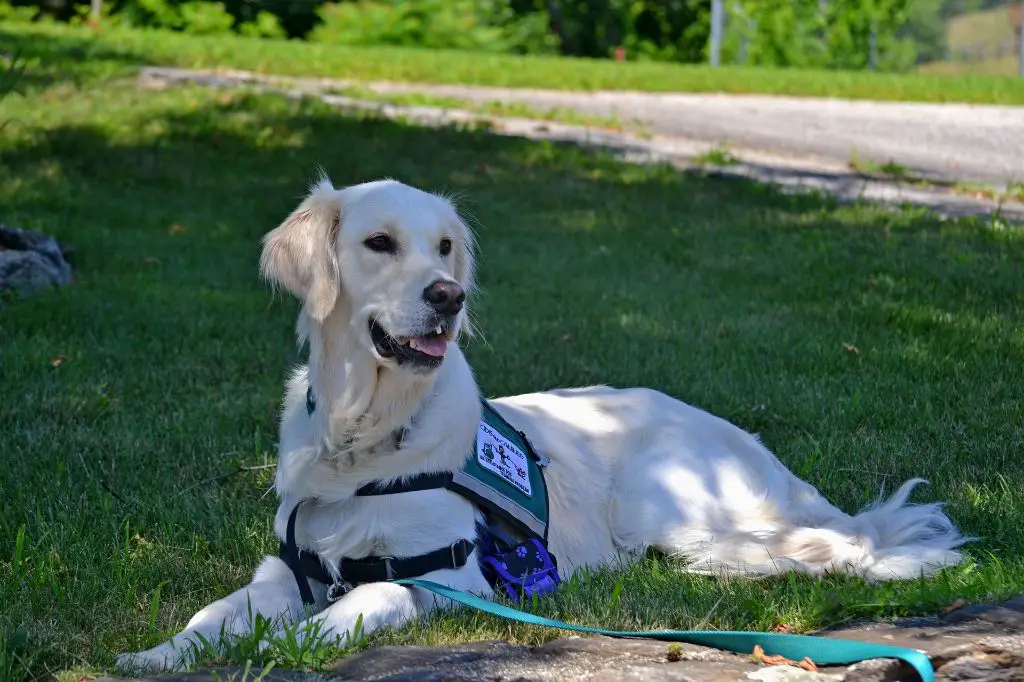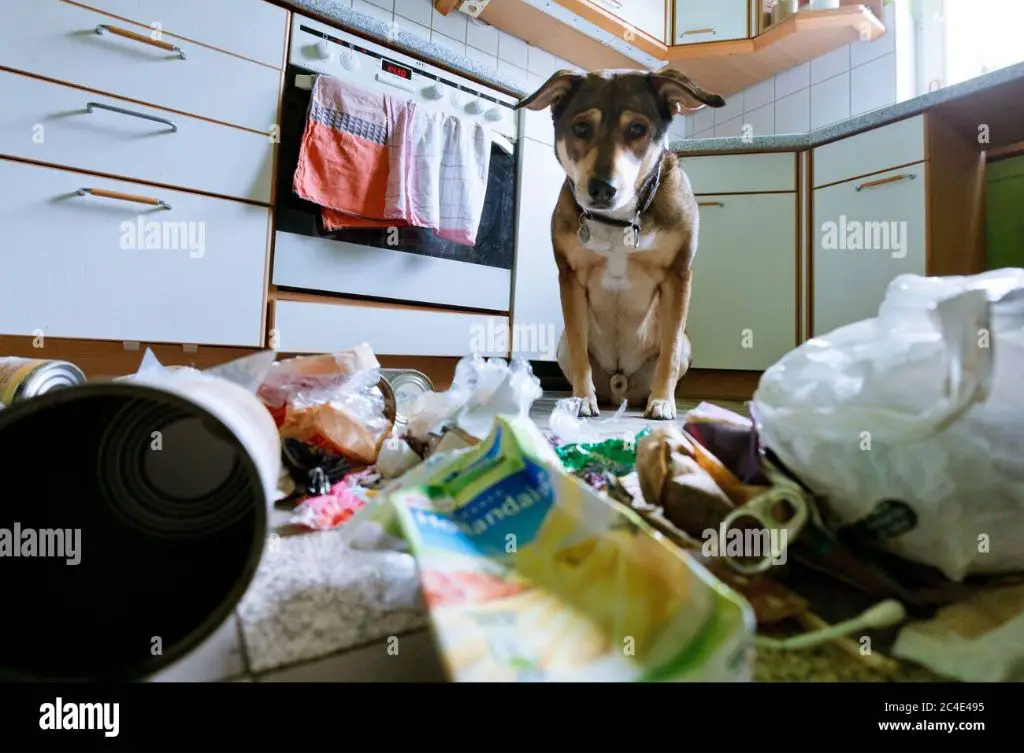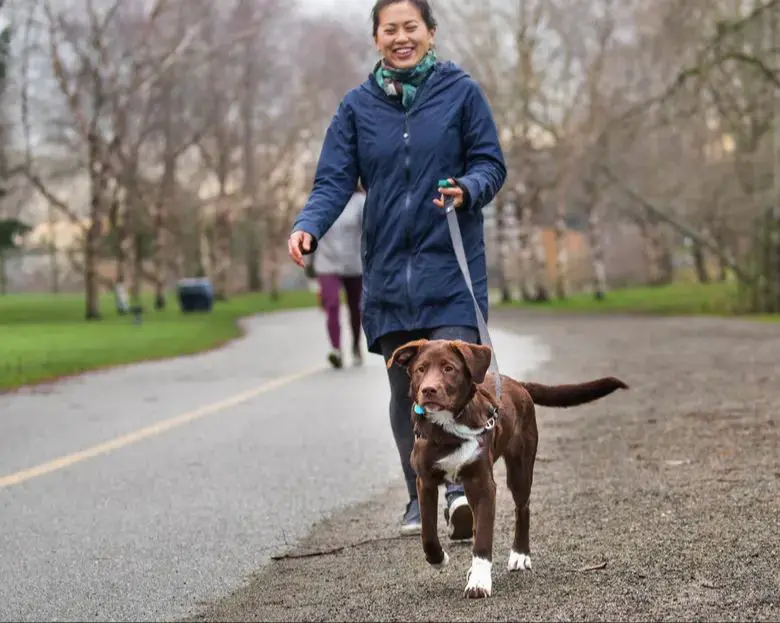Introduction
Seizures are common in dogs, affecting up to 5% of the canine population. A seizure occurs when there is sudden abnormal electrical activity in the brain, resulting in a wide range of physical symptoms like collapsing, loss of consciousness, muscle contractions, salivating, and chomping motions. It’s a terrifying event for both dogs and their owners.
For dog owners, a dilemma emerges if your dog has recurrent seizures: is it safe to leave them alone? It’s stressful imagining your dog experiencing a seizure without anyone present to help. However, the answer depends on your specific situation, your dog’s health, preparation measures, and veterinary guidance. With proper precautions, many dogs can be left briefly alone between seizures.
Defining Seizures in Dogs
A seizure is a sudden, uncontrolled electrical disturbance in the brain. It causes changes in your dog’s behavior, movements, feelings, sensations, or levels of consciousness. Seizures in dogs are also known as convulsions or fits.
There are different types of seizures:
- Generalized seizures affect the whole brain. Your dog will lose consciousness, fall down, and their body will become stiff. They may urinate, defecate, chomp their jaws, paddle their legs, and salivate. These usually last 1-3 minutes.
- Focal seizures only affect one area of your dog’s brain, so they remain conscious. They may stare blankly, snap at the air, run in circles, or have rhythmic jerking motions in one part of their body. These can progress to generalized seizures.
- Cluster seizures are multiple seizures within a 24-hour period, with recovery between each one.

Seizures are caused by abnormal electrical activity in the brain. Common causes include:
- Idiopathic epilepsy – this is the most common cause in dogs. The origin is unknown.
- Trauma or injury to the head
- Brain tumors
- Metabolic disorders like low blood sugar, liver or kidney disease
- Toxins, poisons or infections causing inflammation of the brain
- Vascular disorders like stroke or brain hemorrhage
Risks of Leaving a Dog with Seizures Alone
One of the biggest risks of leaving a dog alone during a seizure is the potential for injury. During a seizure, a dog’s muscles contract and relax repeatedly in quick succession. They often fall over, lose awareness, chomp their jaws, and paddle their limbs erratically. This lack of control can lead to self-injury if the dog knocks into furniture or walls, falls down stairs, or gets tangled in objects.
Dogs having seizures are also prone to choking on saliva or vomit. Their abnormal breathing during the seizure means they cannot adequately protect their airway. An owner’s presence allows them to monitor the dog’s breathing, gently clear the airway if needed, and reposition the head to prevent aspiration.
Additionally, being alone means there is no one to provide first aid or comfort to the dog after the seizure has ended. The post-seizure period leaves a dog disoriented, unstable, and vulnerable. A caring owner can prevent falls, keep the dog calm, monitor vital signs, and determine if emergency vet care is required.
Overall, the lack of human supervision and assistance during and after a seizure significantly increases the chances of avoidable harm or trauma for a dog. Leaving them to experience a seizure alone removes a key protection against serious injury or complications.
Precautions and Preparations
If you decide leaving your dog alone during a seizure is absolutely necessary, there are some precautions and preparations you can take to help protect your dog:
Safety-proof areas. Clear floors of objects your dog could knock over or get tangled in during a seizure. Pad sharp corners or edges your dog could strike. Keep doors to unsafe areas like garages, balconies, or pools securely closed.
Set up camera monitors. Install cameras to monitor your dog remotely. Make sure they cover main areas like your dog’s crate or sleeping area. Check on your dog frequently using a smartphone app.
Update ID tags. Ensure your dog wears a collar with visible ID tags listing your phone number and address. Consider adding “epileptic dog” or “seizure alert dog” to ID tags.
Establish medication routines. If your vet has prescribed anti-seizure medication, make sure you understand the proper administration schedule and dosages. Consider an automatic feeder to ensure regular timed dispensing.
Taking some reasonable precautions can help provide your dog with a safer environment if you have no other option but to leave your dog home alone during seizure episodes. However, supervision and companionship is ideal if at all possible.
Alternatives to Leaving Alone
If you don’t feel comfortable leaving your dog alone during the day, there are alternatives to provide them care and supervision.

Pet Sitters
Hiring a pet sitter to stay with your dog is an excellent option. Pet sitters can provide one-on-one care, take your dog outside for bathroom breaks, administer medication if needed, and monitor your dog closely for any signs of seizure activity.
Doggy Daycare
Doggy daycares provide supervision and socialization for dogs during the day. Staff are experienced in caring for dogs with medical conditions. However, discuss your dog’s seizures beforehand to ensure they can provide adequate monitoring and care if a seizure occurs.
Take to Work
If your workplace allows it, taking your dog to work with you allows you to keep a close eye on them throughout the day. This ensures you can respond quickly if you notice any indicator signs of an impending seizure. It also avoids leaving them home alone. However, your work environment needs to be dog-friendly.
Brief Seizure-Free Periods
While most dogs with seizures should not be left alone for long periods of time, very short errands may be okay for some dogs during their seizure-free intervals. If your dog has predictable patterns where they tend to have extended seizure-free periods, you may be able to briefly leave to grab groceries, pick up mail, or other quick tasks. However, this depends on the reliability of your dog’s seizure intervals and should only be considered after consulting your veterinarian. You also need to ensure your dog is closely monitored before and after. Never leave a dog with seizures unattended for more than 30 minutes, even during a seizure-free phase.
Consulting Your Veterinarian
One of the most important things you can do for a dog with seizures is to consult your veterinarian. Your vet is familiar with your dog’s medical history and can provide tailored advice on caring for your specific pup. When it comes to deciding whether or not to leave your dog alone during seizure episodes, your vet’s input is invaluable.
Discuss your dog’s seizure condition thoroughly with your vet, including frequency, duration, severity, and any identifiable triggers. Ask if your dog is at risk of status epilepticus, a life-threatening seizure emergency. Go over all of your dog’s medications and dosages. Review safe handling techniques in case a seizure occurs while you are home with your dog.
Your vet can help assess whether your individual dog may be okay for brief periods alone after a seizure or if they require constant supervision. They can advise you on precautions like pet cameras, containment options, and emergency plans. Your vet can also refer you to a veterinary neurologist if needed for additional guidance.
While every dog is different, your veterinarian will have the best understanding of your dog’s particular needs. Leaving a seizing dog alone is risky, so consult your vet for advice tailored to caring for your pup safely and humanely.
Caring for Your Dog’s Needs
When leaving your dog with seizures alone for any period of time, it’s important to ensure all of their needs are met before you go. This includes:
Outdoor Time: Dogs need regular opportunities to go outside to relieve themselves and get fresh air and exercise. Try to take your dog out right before you leave to minimize accidents. Consider hiring a dog walker or asking a friend or neighbor to stop by if you’ll be gone for an extended period.

Stimulation: Leave some interactive toys to keep your dog engaged and mentally stimulated while you’re away. Food puzzles, chew toys, or balls can provide activity. You may also leave the TV or radio on for comfort.
Medications: If your dog takes regular medications for seizures or other conditions, make sure to administer them before departing. Consider asking someone to check in and give additional doses if you’ll be gone for a longer timeframe.
Meeting your dog’s basic needs for bathroom breaks, play, and medications can help reduce anxiety when left alone and improve their overall wellbeing.
Monitoring Your Dog
When you need to leave your dog with seizures alone for brief periods, it’s important to monitor them to ensure their safety. There are several options to help you keep an eye on your dog from afar:
Cameras: Setting up a camera at home allows you to check in on your dog remotely. Look for cameras that provide a live video feed you can access via smartphone or computer. Make sure the camera has a wide viewing angle to capture the whole room.
Activity trackers: Dog activity monitors and GPS trackers can notify you if your dog has an unusual period of inactivity which could signal a seizure. Trackers worn on a collar allow 24/7 monitoring.
Seizure alert systems: Specialized seizure monitors detect convulsive seizures and send real-time alerts to your phone or family members. These can provide added assurance when you can’t physically be there.
While nothing replaces direct supervision, utilizing technology allows you to monitor your dog from anywhere. This can give you greater flexibility while still keeping your dog’s wellbeing top of mind. Discuss options with your vet to determine if remote monitoring tools could provide you and your dog with greater peace of mind.
Making the Best Decision for Your Dog
When deciding if and when you can leave your dog alone during a seizure condition, consider the following factors:
- Frequency and severity of your dog’s seizures – Dogs with frequent or severe seizures likely require more supervision.
- Your dog’s recovery period – Some dogs bounce back quickly while others need prolonged rest.
- Risk factors in your home – Assess dangers like stairs, pools, balconies, and access to roads.
- Preparedness – Could you set up gates, camera monitors, or pet sitters as needed?
- Your schedule and ability to be responsive – Make sure you can return quickly if your dog has a seizure.
- Your veterinarian’s advice – Consult with your vet about your specific dog and situation.
- Impact on your dog’s welfare – Monitor your dog’s stress levels; some dogs feel anxious when left alone.
- Quality of life – Prioritize your dog’s health, safety, and happiness above all.

Taking these factors into account can help you make the most informed decision for your individual dog’s care and wellbeing when dealing with seizures.